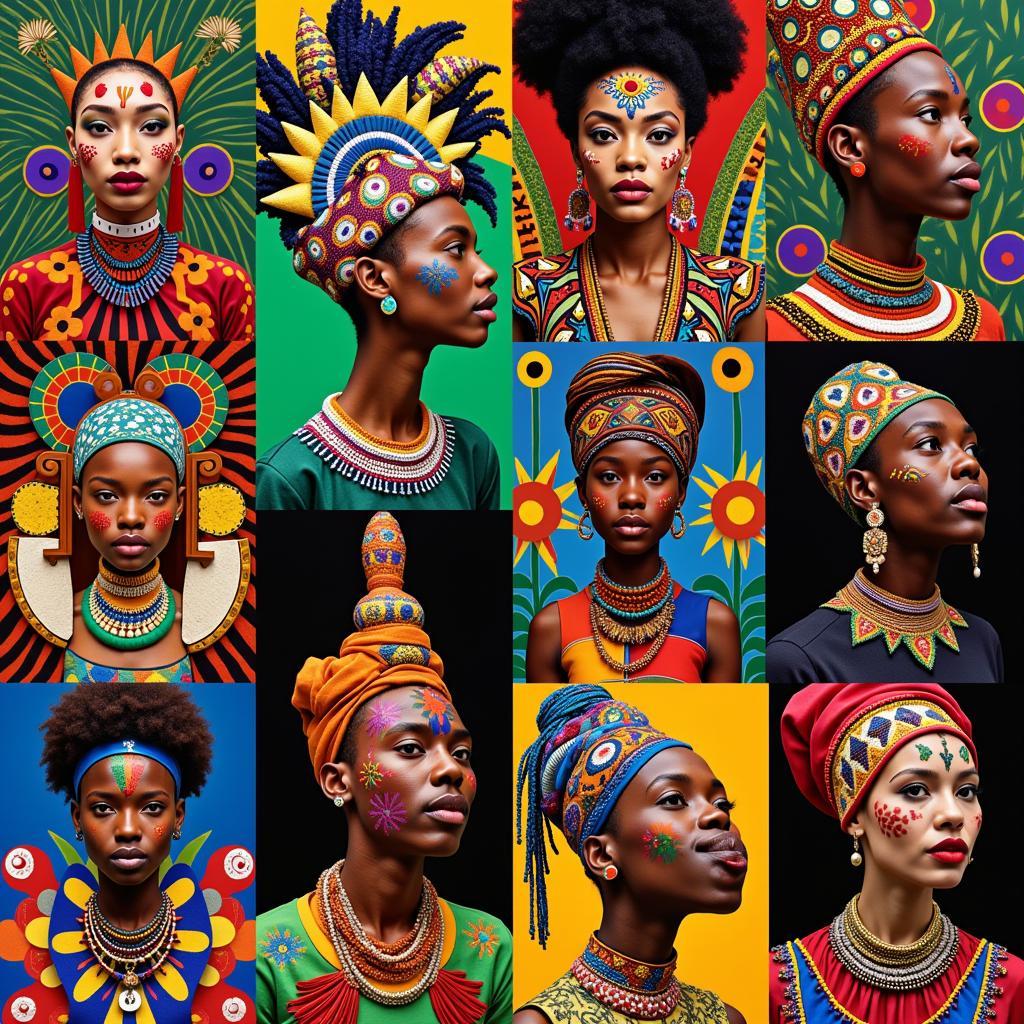Unveiling the Rich Significance of African Face Paint
African Face Paint Meaning goes far beyond mere decoration. It’s a powerful language, a vibrant art form deeply interwoven with the cultural fabric of diverse African communities. For centuries, face painting has served as a complex communication system, conveying identity, status, spirituality, and even emotional states. From intricate patterns to bold strokes, each design tells a unique story, reflecting the rich tapestry of African traditions.
For many, the first encounter with African face paint might be through striking images of warriors or ceremonial dancers. However, African face paint transcends these stereotypical portrayals. It’s an integral part of daily life in many cultures, used for everything from beautification to protection from the elements.
Decoding the Symbolic Language of African Face Paint
Understanding African face paint meaning requires delving into the specific cultural contexts. The same symbol can hold vastly different meanings across various tribes and regions. Colors, for example, play a crucial role. White might represent purity in one culture, while in another, it signifies death or mourning. Similarly, red can symbolize both power and danger.
The Role of Colors in African Face Paint
The significance of colors in African face paint is multifaceted and often tied to the natural world. Red, derived from ochre, might represent the earth and fertility, while blue, a rarer pigment, can symbolize the sky and the divine. Green, often associated with vegetation, can signify growth and healing. These natural associations imbue the face paint with a deeper, spiritual meaning.
Beyond Aesthetics: The Practical Uses of African Face Paint
African face paint meaning extends beyond the symbolic and spiritual. It also serves practical purposes. In arid regions, certain clays and pigments are used to protect the skin from the harsh sun and wind. Some tribes believe specific designs ward off evil spirits or bring good luck. This blend of the practical and the symbolic highlights the multifaceted nature of this ancient art form.
African face paint man might incorporate elements signifying his role in society, his family lineage, or his achievements. This visual language allows for immediate communication within the community, conveying important information without words.
How is African Face Paint Made?
Traditional African face paint is often created using natural materials found in the environment. Clay, charcoal, and various plant extracts are ground into fine powders and mixed with oils or fats to create a paste. This practice connects the wearer to the land and reinforces the spiritual dimension of face painting.
African Face Paint in the Modern World
While maintaining strong ties to tradition, African dolls using newspaper and other artistic mediums, African face paint continues to evolve. Contemporary artists are exploring new ways to express their heritage and identity through this ancient medium, blending traditional techniques with modern aesthetics.
In conclusion, African face paint meaning is a rich and complex subject. It’s a vibrant tapestry woven from tradition, spirituality, and artistry. By understanding the cultural contexts and symbolic language behind these designs, we can gain a deeper appreciation for the profound significance of this ancient art form.
FAQ:
- What is the primary purpose of African face paint? (Communication of identity, status, spirituality, and emotional state.)
- What do the colors in African face paint represent? (Different meanings based on tribe and region, often connected to natural elements.)
- How is traditional African face paint made? (From natural materials like clay, charcoal, and plant extracts.)
- How is African face paint used today? (Still used traditionally, also incorporated into contemporary art forms.)
- Where can I learn more about specific tribal face paint traditions? (Research specific tribes and regions.)
- Are there any taboos related to African face paint? (Yes, these vary by tribe and should be researched before engaging with the practice.)
- Can non-Africans wear African face paint? (It depends on the context; respectful appreciation is key, avoid cultural appropriation.)
You might also be interested in: african american religious images free, african black nude male
For any assistance, contact us at: Phone: +255768904061, Email: kaka.mag@gmail.com or visit our address: Mbarali DC Mawindi, Kangaga, Tanzania. We have a 24/7 customer support team.
